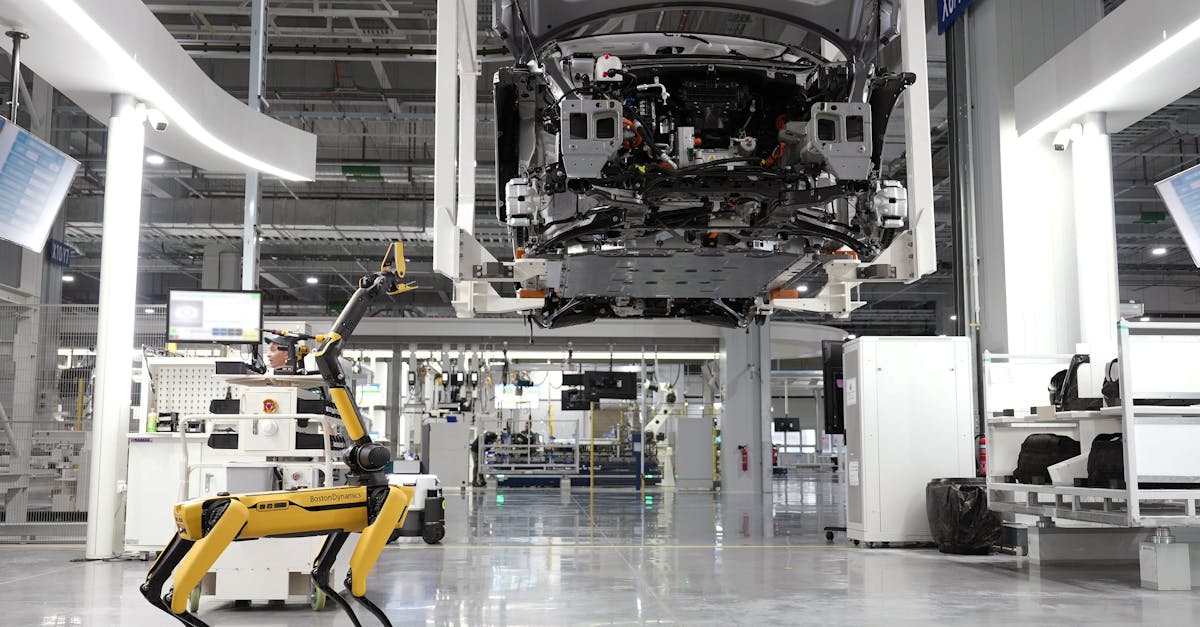How Predictive Maintenance Saves Millions in Industrial Operations
Introduction
In today's fast-paced industrial environment, businesses constantly seek innovative ways to optimize operations and reduce costs. Predictive maintenance has emerged as a game-changer, transforming how companies approach equipment upkeep. Rather than waiting for machinery to fail or scheduling routine maintenance regardless of necessity, predictive maintenance uses advanced technologies to assess equipment condition in real-time. This method not only enhances efficiency but also offers substantial financial benefits. By minimizing unexpected downtime and unnecessary repairs, predictive maintenance can save industrial operations millions annually. Understanding its potential is crucial for any business aspiring to thrive in a competitive market.
Advertisement
The Foundation of Predictive Maintenance
Predictive maintenance hinges on the collection and analysis of data from equipment, often through sensors and IoT devices. These tools continuously monitor the machinery's performance, gathering valuable information on aspects like temperature, vibration, and speed. This data is then analyzed using sophisticated algorithms and machine learning models to predict potential failures before they occur. Unlike traditional methods, which react to issues either as they happen or on a fixed schedule, predictive maintenance takes a proactive stance. This approach allows companies to address issues precisely when needed, avoiding unnecessary downtime and costly emergency repairs.
Advertisement
Financial Benefits of Reduced Downtime
Downtime, especially when unplanned, can have devastating financial repercussions for industrial operations. Unscheduled repairs often come with hefty costs, including labor charges and expedited parts. Meanwhile, halted production leads to lost revenue, a matter compounded by the potential impact on client satisfaction and brand reputation. Predictive maintenance significantly reduces the likelihood of unplanned downtime by preemptively identifying issues. Regularly updated insights allow for timely interventions, usually during scheduled off-peak hours, minimizing disruption. As a result, companies witness a considerable decrease in costs associated with urgent repairs and lost productivity, translating to millions in savings over time.
Advertisement
Enhancing Equipment Efficiency and Lifespan
One of the understated advantages of predictive maintenance is its impact on equipment longevity and efficiency. Regularly monitored and well-maintained machinery tends to operate closer to its optimal performance levels. Addressing minor issues before they escalate helps avoid scenarios where equipment runs under suboptimal conditions, which can lead to premature wear and tear. Predictive maintenance also allows for more informed decisions regarding equipment replacements and upgrades. By understanding how machinery is performing in real-time, businesses can extend their machinery's lifespan and avoid premature replacements, thus protecting their capital investments and ensuring higher returns.
Advertisement
Improving Worker Safety and Compliance
Predictive maintenance extends its benefits beyond financial savings and efficiency by also enhancing workplace safety. Malfunctioning equipment can pose significant risks to workers, leading to accidents and potential regulatory violations. By identifying and rectifying issues in their nascent stages, predictive maintenance significantly reduces these risks. Moreover, adherence to safety standards and regulations is crucial for avoiding fines and lawsuits, further contributing to financial savings. As companies increasingly prioritize workplace safety, predictive maintenance helps maintain compliance effortlessly, all while ensuring a safer working environment for employees.
Advertisement
Sustainability and Environmental Impacts
Predictive maintenance plays a vital role in promoting sustainability within industrial operations. By ensuring machinery operates efficiently, energy consumption is minimized, reducing each facility's overall carbon footprint. Additionally, predictive maintenance lowers industrial waste, as parts are repaired or replaced only when necessary, avoiding unnecessary disposal. This sustainable approach aligns with modern environmentally conscious business strategies, gaining favor with stakeholders who value corporate social responsibility. Thus, predictive maintenance not only saves costs but also supports environmentally sustainable practices in the industrial sector.
Advertisement
Challenges in Implementing Predictive Maintenance
While the benefits of predictive maintenance are evident, offering initial implementation can present challenges. Investing in the necessary technologies and training for staff accustomed to traditional methods can be daunting. Moreover, the shift requires a cultural change within the organization, demanding buy-in at all levels. Companies must also invest in reliable data analytics capabilities to interpret the data effectively. Despite these challenges, with thoughtful planning and comprehensive training programs, businesses can effectively integrate predictive maintenance strategies. Overcoming these hurdles unlocks the full potential of predictive maintenance, leading to a seamless transition and substantial long-term gains.
Advertisement
Real-World Success Stories
Several leading companies have already reaped the benefits of implementing predictive maintenance strategies. For instance, a global car manufacturer reported significant reductions in production line halt times, attributing millions in savings annually to predictive maintenance investments. Similarly, an energy sector giant witnessed regular efficiency improvements in its facilities, further validating the predictive maintenance paradigm. These success stories serve as inspiring examples for other businesses, highlighting the practical benefits and substantial returns on investment. The lessons learned from these pioneering companies offer valuable insights for others seeking to capitalize on predictive maintenance benefits.
Advertisement
Future Trends and Innovations
As technology evolves, the scope of predictive maintenance is set to expand further, integrating advancements in artificial intelligence, big data, and the Internet of Things (IoT). AI can offer even more precise failure predictions, providing businesses with timely insights for further cost reductions and operational efficiencies. Moreover, as IoT devices' capabilities grow, enhanced real-time monitoring and data collection become increasingly feasible across industries. Collaboration between tech companies and industrial leaders will continue to foster more innovative solutions, driving the predictive maintenance industry toward the forefront of industrial digital transformation. Companies prepared to embrace these trends will lead the way into a future where maintenance efficacies reach new heights.
Advertisement
Conclusion
Predictive maintenance has undoubtedly revolutionized industrial operations, offering a proactive approach to equipment management that translates into significant financial savings. While implementation challenges exist, the benefits, ranging from cost savings and efficiency to improved safety and sustainability, far outweigh these initial hurdles. Success stories from industry leaders demonstrate the impact and potential of predictive maintenance to transform operations. As technology continues to advance, the potential for predictive maintenance will only grow, shaping the future of industrial operations. Embracing this innovative approach ensures that companies remain competitive and efficient, saving millions and driving forward into an era of smart maintenance.
Advertisement








